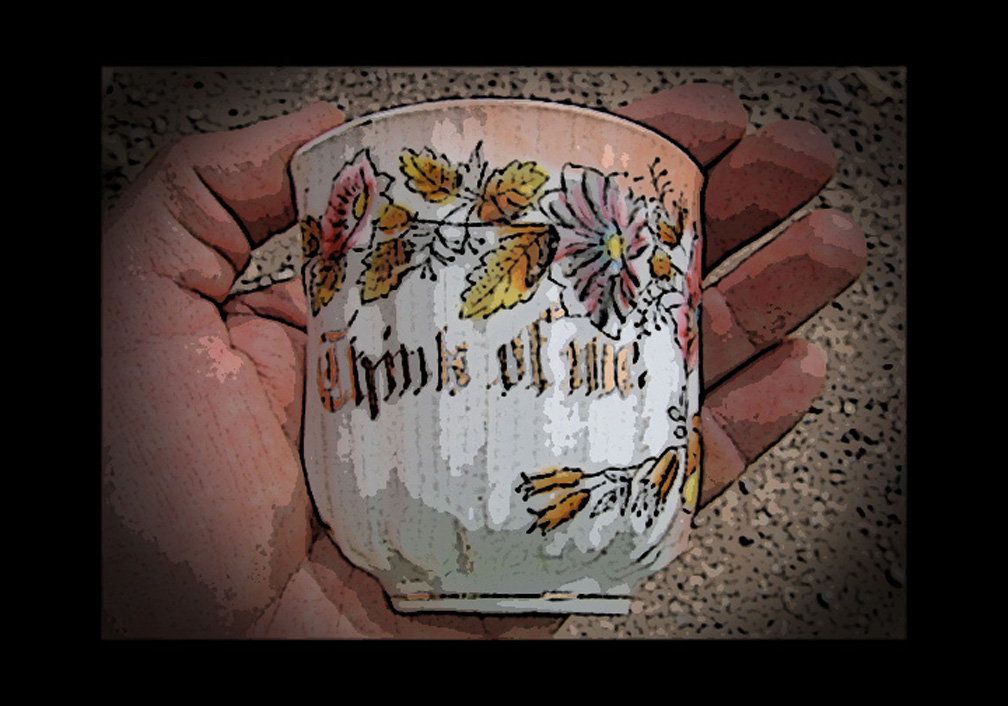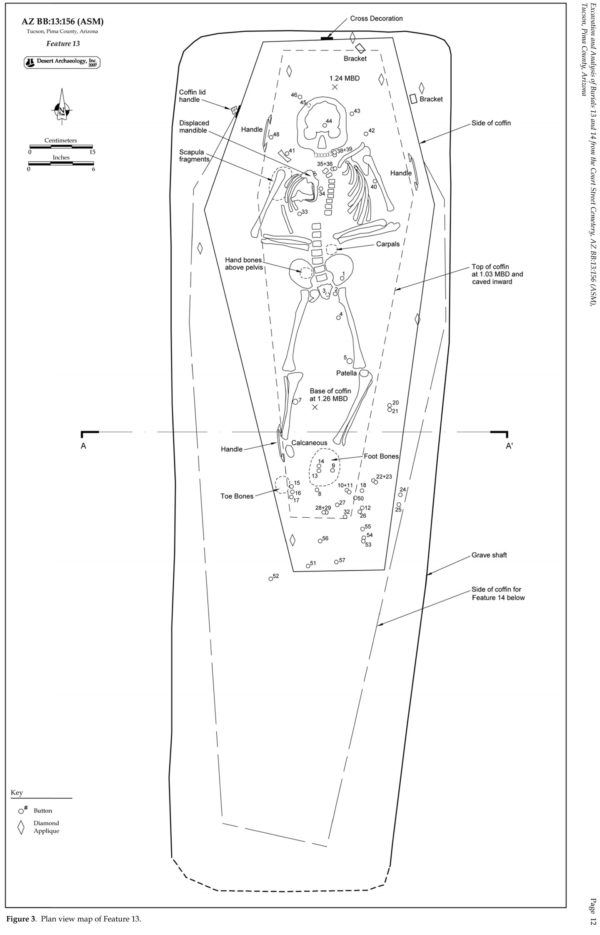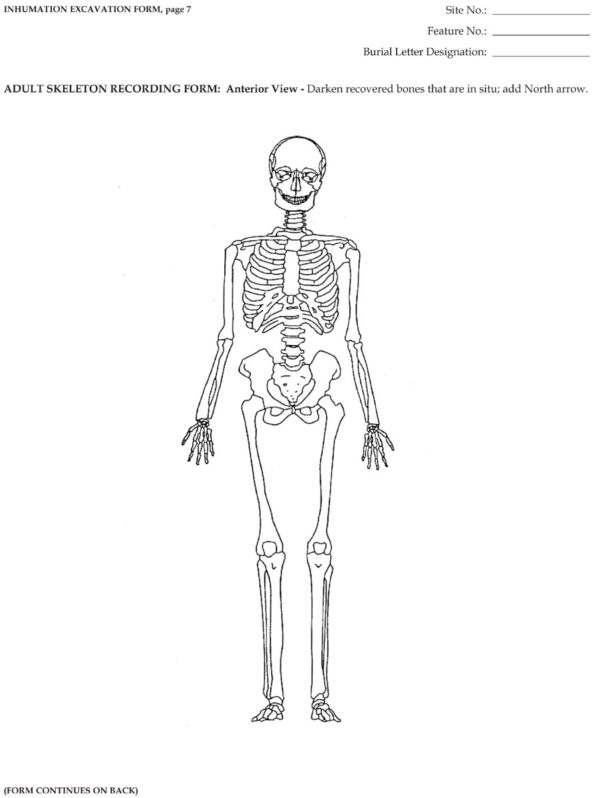
Answering Archaeological Questions: What Happens When You Encounter a Mortuary Feature
Homer Thiel discusses the procedures followed when encountering human remains in Arizona–on an archaeological excavation or while digging up your garden.
People have lived in Arizona for perhaps 12,000 years or more. Hundreds of thousands of people, if not millions, have died within the modern political boundaries of our state. Their remains are routinely encountered during archaeological projects or during ground-disturbing activities such as construction or utility installation. What happens when remains are encountered? Who should you contact?
Until 1990, it was legal in Arizona for people to disturb areas containing human remains on private property. This resulted in looters opening funerary features and removing artifacts, which were often sold as antiquities or added to private collections. A protest led by students over the planned looting of a pueblo site in northern Arizona finally led to the passage of Arizona Revised Statutes 41-844 and 41-865, which now protect human remains and associated funerary objects in unmarked mortuary features and abandoned cemeteries on government (state, county, local) and private lands. Shortly thereafter, the Native American Graves Protection and Repatriation Act (NAGPRA) was also passed in 1990, protecting mortuary features on federal lands and requiring the repatriation of discovered remains to descendant communities for reburial.
Before any archaeological fieldwork can begin, the Arizona State Museum (ASM) is contacted and informed of the type of project and its location. The ASM Repatriation Coordinator contacts likely descendant communities and their concerns are incorporated into a Burial Case Agreement. This agreement lays out the procedures that must take place if human remains are encountered. If remains are encountered during a construction project, work is immediately halted in the area until they are documented and carefully recovered. Typically, the archaeologist contacts ASM, with the repatriation coordinator then contacting the descendant communities. The agreement lays out what can or cannot be done during the recovery, documentation, and repatriation of human remains and associated funerary objects. Sometimes members of the Native American group(s) identified as descendant communities hold a blessing ceremony at the site before the remains are recovered.
Desert Archaeology often teams with the University of Arizona when human remains are encountered on our projects. University staff and students who are trained in the recovery and documentation of human remains assist in recovery and non-destructive documentation.
In the field, archaeologists and osteologists (scientists who study human bone) uncover the remains and funerary objects accompanying them. They use a variety of hand tools, including trowels, small wooden implements, and brushes to carefully remove soil. All soil is passed through a 1/8-inch mesh screen so that bone fragments and small artifacts, including tiny beads, are recovered. If smaller bone fragments are present the soil is recovered as well. A map is drawn showing the position of the remains, the location of any associated funerary objects, and the edges of the mortuary pit.

Maps are drawn showing the position of the remains and funerary objects. In this case from the Court Street Cemetery, the drawing also shows the coffin outline, coffin hardware, the edge of the grave shaft, and the outline of an underlying coffin (drafted by Susan Hall).
Desert Archaeology records information on specialized field forms, one for inhumations and one for cremations. We record data on how the remains are positioned and where funerary objects are located, write a description, and color in a drawing showing which skeletal elements are present. The same data is recorded for mortuary features containing animals. Osteologists may examine the human remains to determine sex, age, and note the presence of pathological conditions, such as healed fractures or evidence for arthritis. Measurements may be taken, which can be helpful in determining the age of children or the height of adults.

Desert Archaeology personnel color in the portions of skeletal elements present in the burial.
We then carefully recover the remains, placing each element in a labeled paper bag and then into special cardboard boxes. The remains and any funerary objects associated with them are kept together and escorted to the laboratory. Later they are examined by a trained osteologist, who verifies field observations and records more complete information, such as the condition of the teeth. Funerary objects are documented by specialists to help determine the time period in which the person lived and tell us something about their occupation or status. Also, Desert Archaeology’s zooarchaeologist (animal bone specialist) examines all animal bones recovered from the site to ensure that no human bones are overlooked.
We always remember that these remains are someone’s ancestors. At all times during the recovery, escort to a secure location, and documentation, the human remains are treated with the utmost respect and dignity, and are kept together with any funerary objects that were placed with the remains or were otherwise present in the mortuary feature. The data collected during excavation and analysis is presented in the project’s technical report and often in a special Report of Remains, but Native American remains and associated funerary objects are not photographed, and descendant communities stipulate in the burial agreement what kinds of analysis of the remains are permitted, if any.
Most human remains are repatriated to descendant communities. Native American tribes have special cemeteries where the remains and artifacts are reinterred. Historic Catholic burials found in Tucson are often reburied in Holy Hope Cemetery. Most of the remains found in the National Cemetery (also called the Alameda-Stone Cemetery) were reburied in the All Faiths Memorial Park in Tucson, while those from the military portion were reburied in the Arizona Department of Veterans’ Services Cemetery in Sierra Vista.
What should you do if you encounter human remains on your property? The first step is to call the police. They will determine whether the remains are 50 years old or older, and if so, the Arizona State Museum will be contacted. Human remains younger than 50 years may be subject to police investigation to determine who the person was and whether a homicide has taken place.
As development continues to accelerate in Arizona, more and more human remains are likely to be encountered. We are committed to handling them professionally and respectfully whether they are encountered during construction or planned archaeological fieldwork, ensuring that they are secured and returned to a final resting place as quickly as possible.

